*NURSING > QUESTIONS & ANSWERS > NCC EFM practice Questions and Answers Latest 2022/2023 (All)
NCC EFM practice Questions and Answers Latest 2022/2023
Document Content and Description Below
NCC EFM practice Questions and Answers Latest 2022/2023 Which of the following factors can have a negative effect on uterine blood flow? a. Hypertension b. Epidural c. Hemorrhage d. Diabetes e.... All of the above ✔✔e. All of the above Stimulating the vagus nerve typically produces: a. A decrease in the heart rate b. An increase in the heart rate c. An increase in stroke volume d. No change ✔✔a. A decrease in the heart rate The vagus nerve begins maturation 26 to 28 weeks. Its dominance results in what effect to the FHR baseline? a. Increases baseline b. Decreases baseline ✔✔b. Decreases baseline T/F: The most common artifact with the ultrasound transducer system for fetal heart rate is increased variability. ✔✔True T/F: All fetal monitors contain a logic system designed to reject artifact. ✔✔True T/F: Fetal arrhythmias can be seen on both internal and external monitor tracings. ✔✔True T/F: Variability and periodic changes can be detected with both internal and external monitoring. ✔✔True T/F: Variable decelerations are a vagal response. ✔✔True T/F: Variable decelerations are the most frequently seen fetal heart rate deceleration pattern in labor. ✔✔True Etiology of a baseline FHR of 165bpm occurring for the last hour can be: 1. Maternal supine hypotension 2. Maternal fever 3. Maternal dehydration 4. Unknown a. 1 and 2 b. 1, 2 and 3 c. 2, 3 and 4 ✔✔c. 2, 3 and 4 The most prevalent risk factor associated with fetal death before the onset of labor is: a. Low socioeconomic status b. Fetal malpresentation c. Uteroplacental insufficiency d. Uterine anomalies ✔✔c. Uteroplacental insufficiency Which of the following conditions is not an indication for antepartum fetal surveillance? a. Gestational hypertension b. Diabetes in pregnancy c. Fetus in breech presentation d. Decreased fetal movement ✔✔c. Fetus in breech presentation Which of the following does not affect the degree of fetal activity? a. Vibroacoustic stimulation b. Smoking c. Fetal position d. Gestational age ✔✔a. Vibroacoustic stimulation T/F: Umbilical cord influences that can alter blood flow include true knots, hematomas, and number of umbilical vessels. ✔✔True T/F: Low amplitude contractions are not an early sign of preterm labor. ✔✔False T/F: Corticosteroid administration may cause an increase in FHR accelerations. ✔✔False T/F: Corticosteroid administration may cause an increase in FHR. ✔✔True T/F: Contractions cause an increase in uterine venous pressure and a decrease in uterine artery perfusion. ✔✔True As a result of the intrinsic fetal response to oxygen deprivation, increased catecholamine levels cause the peripheral blood flow to decrease while the blood flow to vital organs increases. These flow changes along with increased catecholamine secretions have what effect on fetal blood pressure and fetal heart rate? A. Increase BP and increase HR B. Increase BP and decrease HR C. Decrease BP and increase HR D. Decrease BP and decrease HR ✔✔B. Increase BP and decrease HR During a term antepartum NST (non-stress test), you notice several variable decelerations that decrease at least 15 bpm and last at least 15 sec long. Which of the following is the least likely explanation? A. True knot B. Gestational diabetes C. Umbilical cord entanglement D. Oligohydramnios ✔✔B. Gestational diabetes All of the following are likely causes of prolonged decelerations except: A. Uterine tachysystole B. Prolapsed cord C. Maternal hypotension D. Maternal fever ✔✔D. Maternal fever All of the following could likely cause minimal variability in FHR except A. Magnesium sulfate administration B. Fetal sleep cycle C. Narcotic administration D. Ephedrine administration ✔✔D. Ephedrine administration When an IUPC has been placed, Montevideo units must be ___ or greater for adequate cervical change to occur. A. 100 B. 200 C. 300 D. 400 ✔✔B. 200 What would be a suspected pH in a fetus whose FHTs included recurrent late decelerations during labor? A. 7.10 B. 7.26 C. 7.32 D. 7.41 ✔✔A. 7.10 The nurse notes a pattern of decelerations on the fetal monitor that begins shortly after the contraction and returns to baseline just before the contraction is over. The correct nursing response is to: a. Give the woman oxygen by facemask at 8-10 L/min b. Position the woman on her opposite side c. Increase the rate of the woman's intravenous fluid d. Continue to observe and record the normal pattern ✔✔d. Continue to observe and record the normal pattern Determining the FHR baseline requires the nurse to approximate the mean FHR rounded to increments of 5 bpm during a ___-m [Show More]
Last updated: 1 year ago
Preview 1 out of 37 pages
.png)
Also available in bundle (1)
.png)
NCC EFM Bundled Exam Questions and Answers with Verified Solutions
NCC EFM Bundled Exam Questions and Answers with Verified Solutions; All Graded A+
By Nutmegs 1 year ago
$20
10
Reviews( 0 )
Document information
Connected school, study & course
About the document
Uploaded On
Aug 16, 2022
Number of pages
37
Written in
Additional information
This document has been written for:
Uploaded
Aug 16, 2022
Downloads
0
Views
80

.png)
.png)
.png)
.png)
.png)
.png)


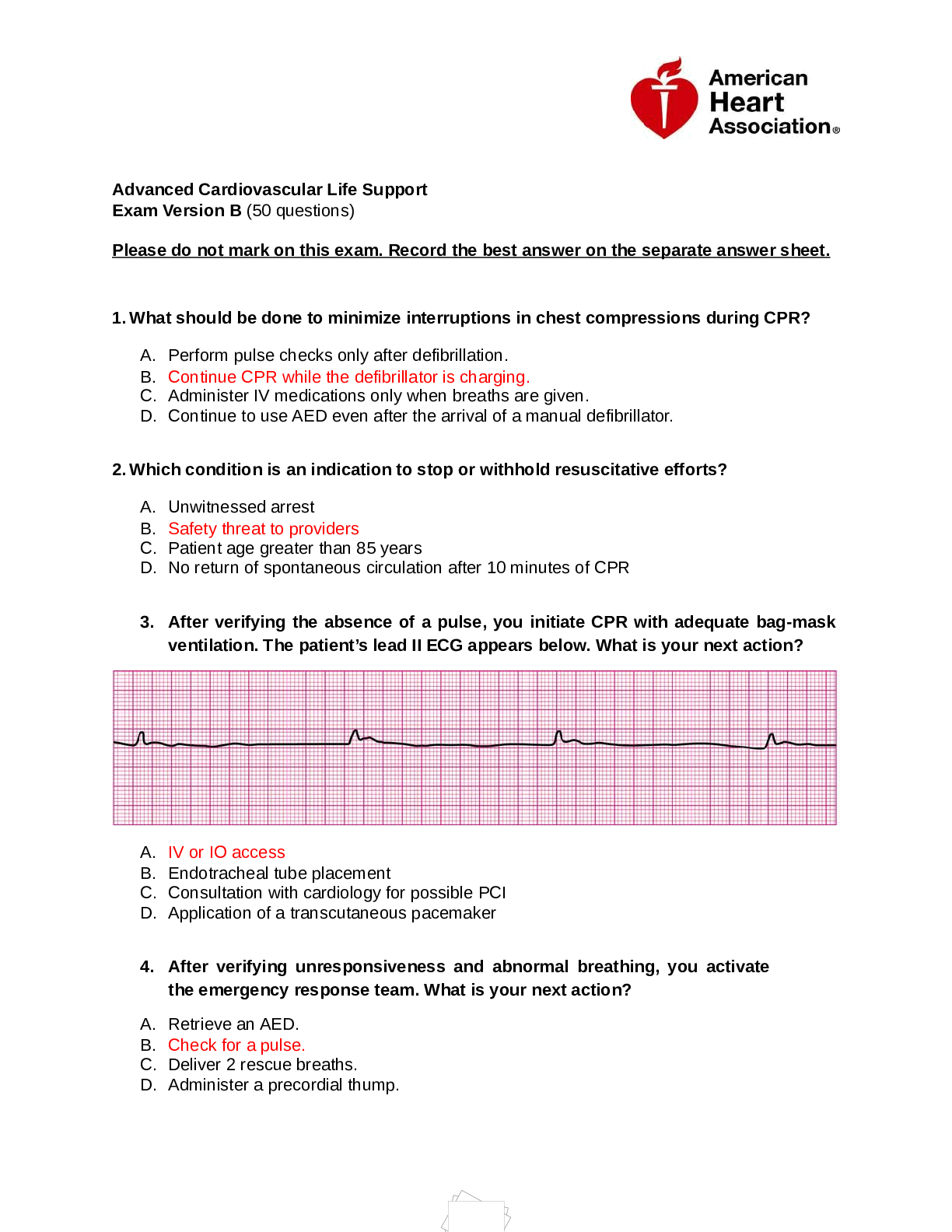


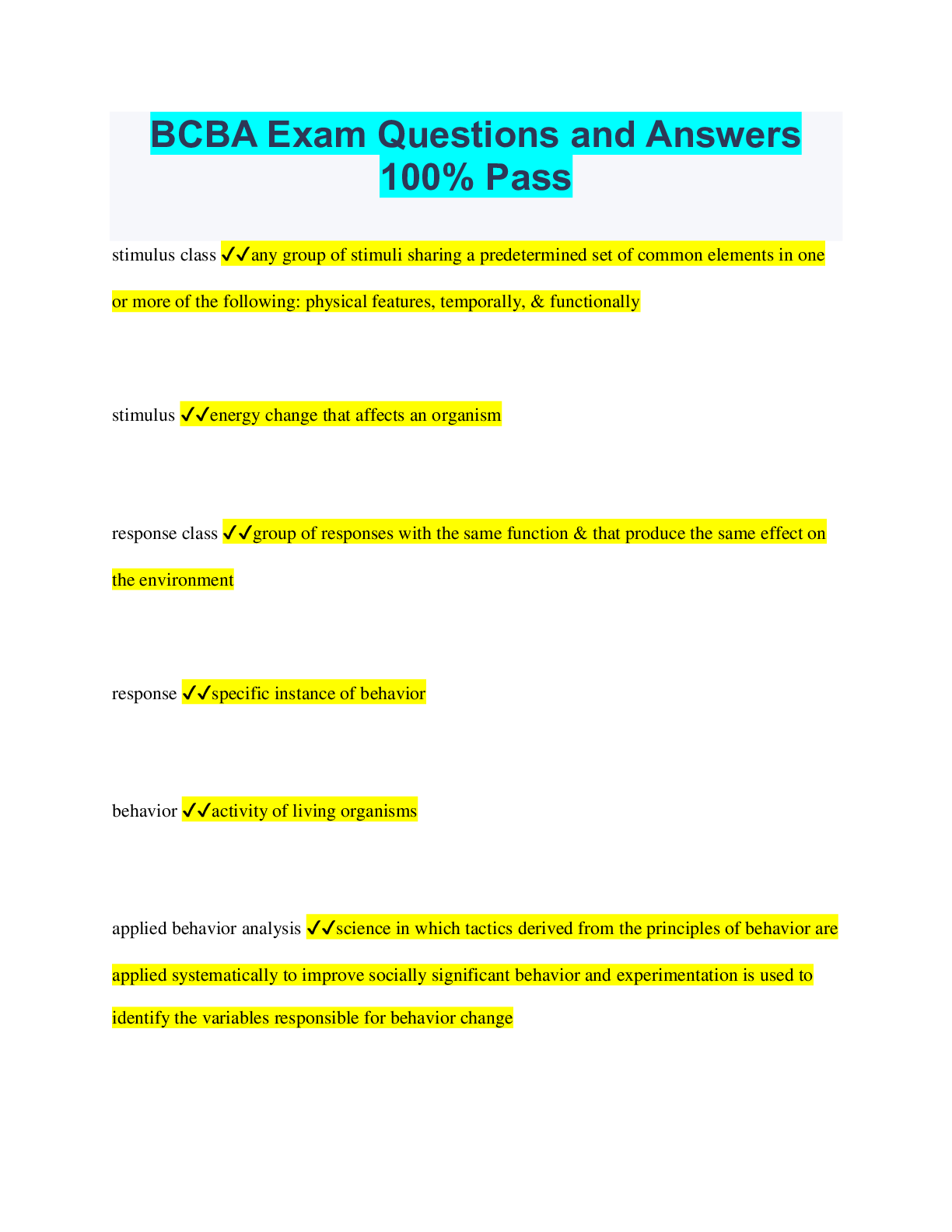
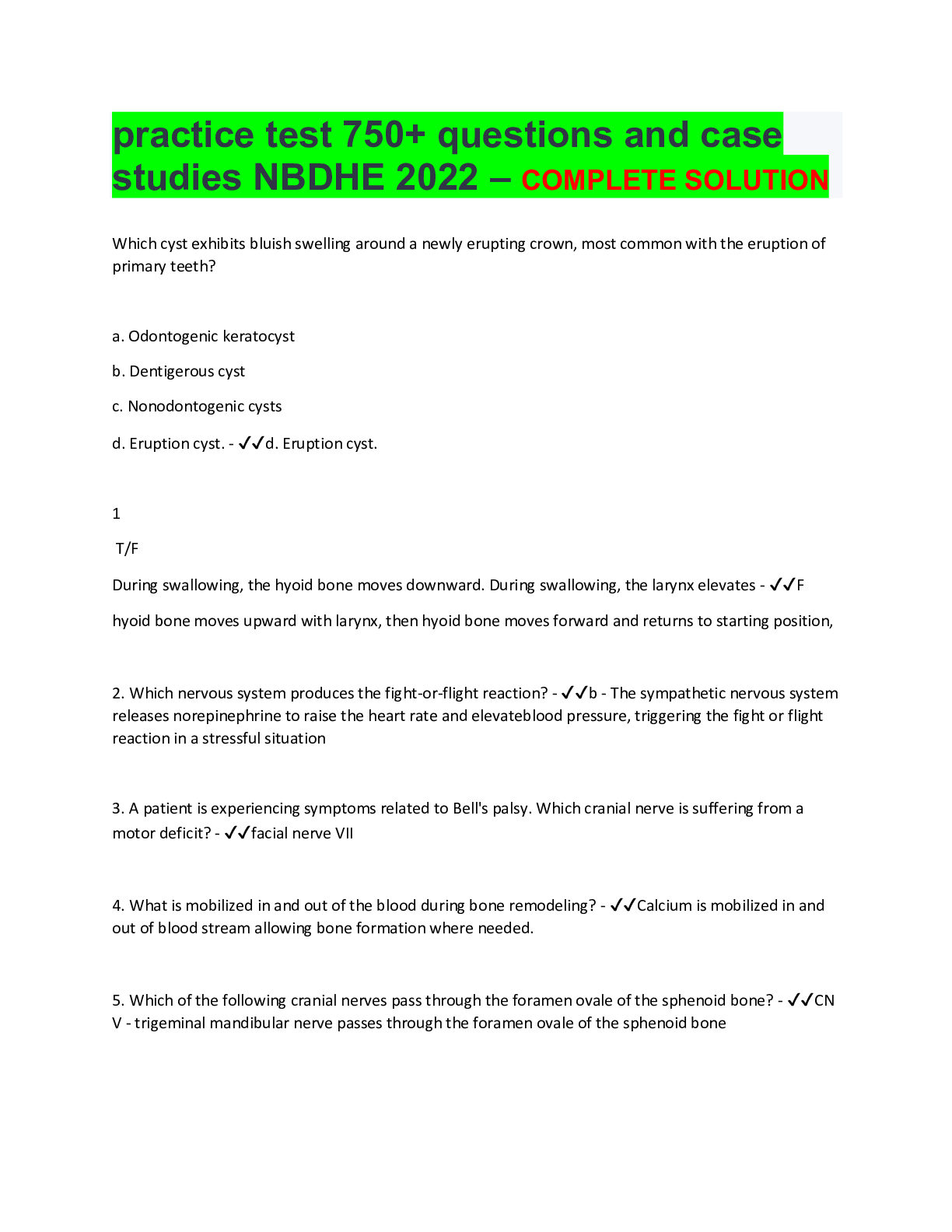
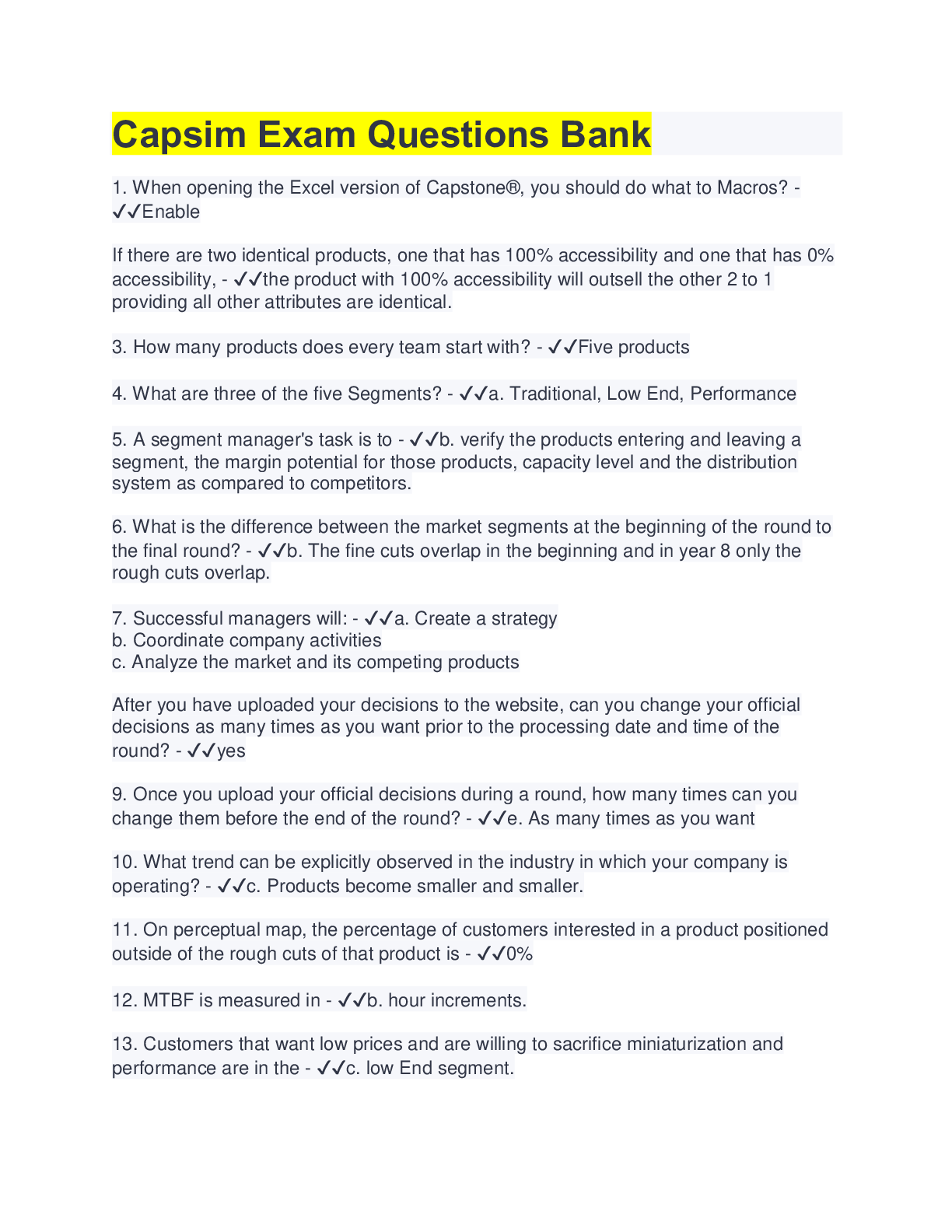



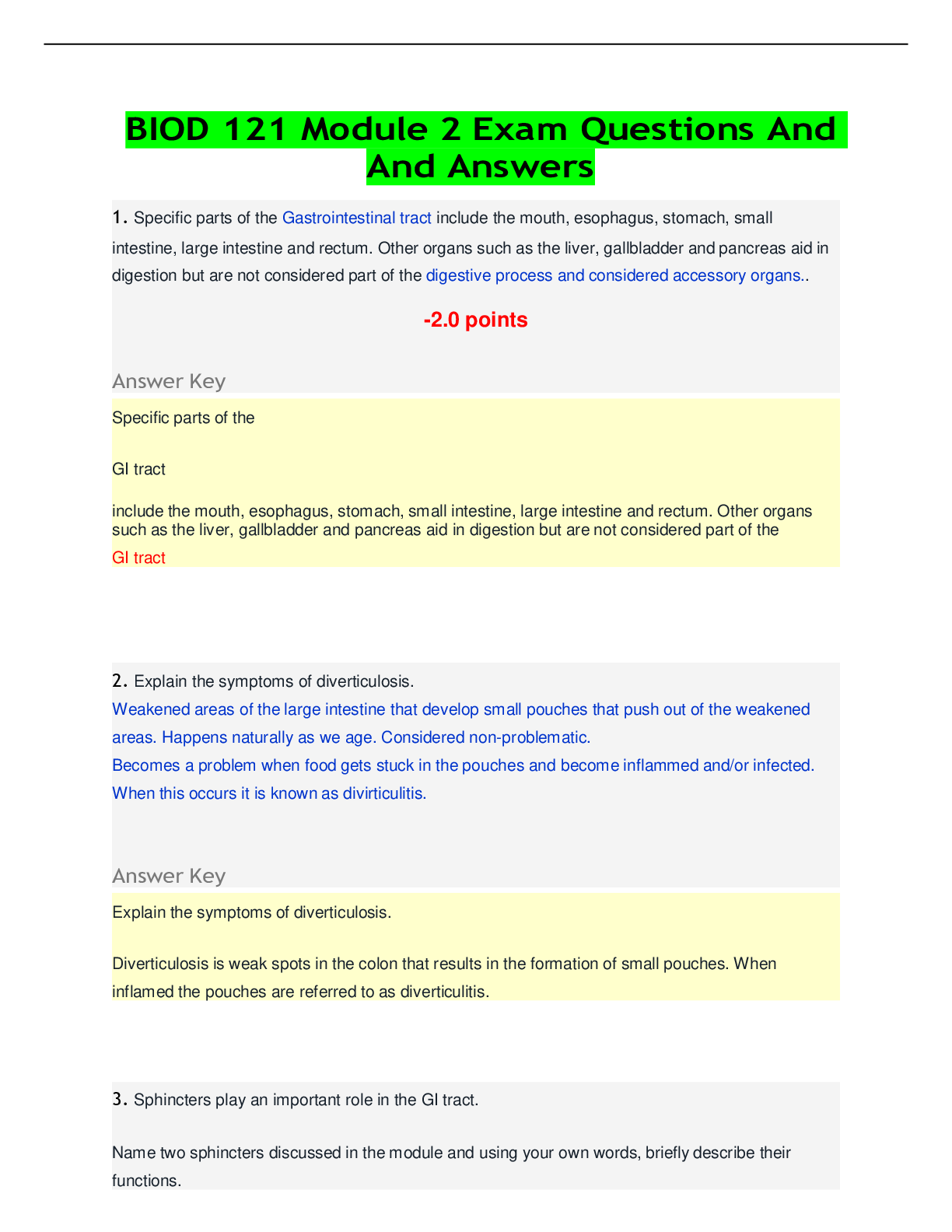

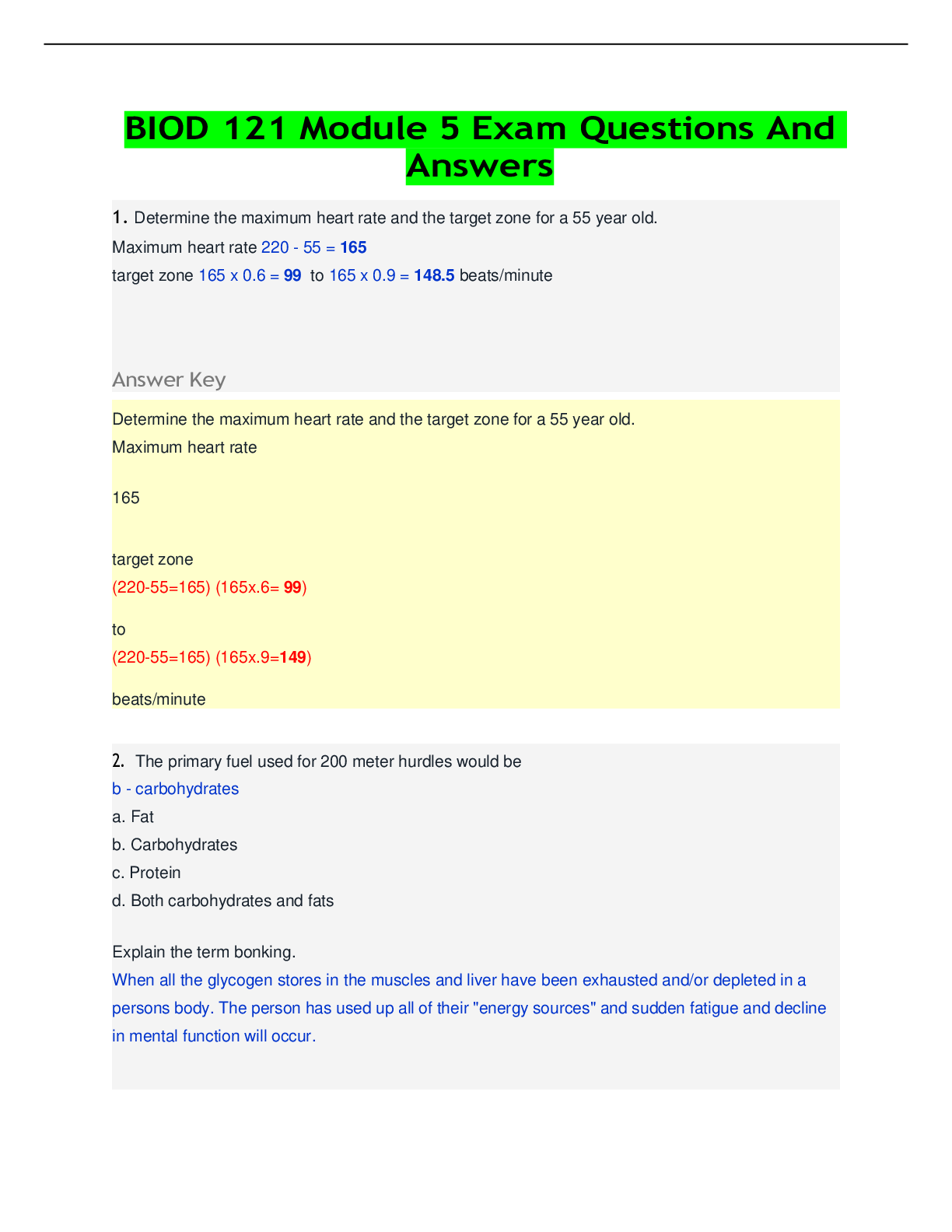
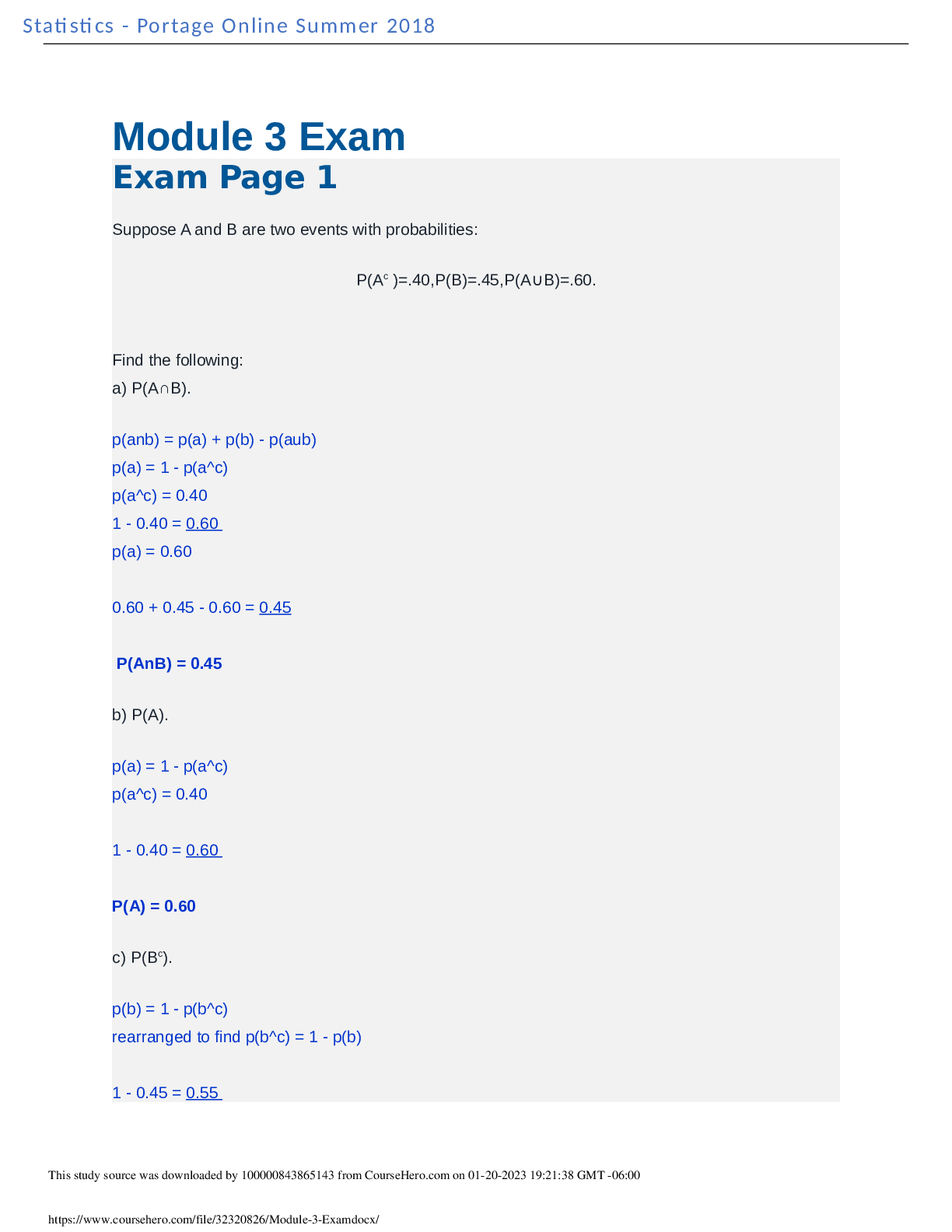
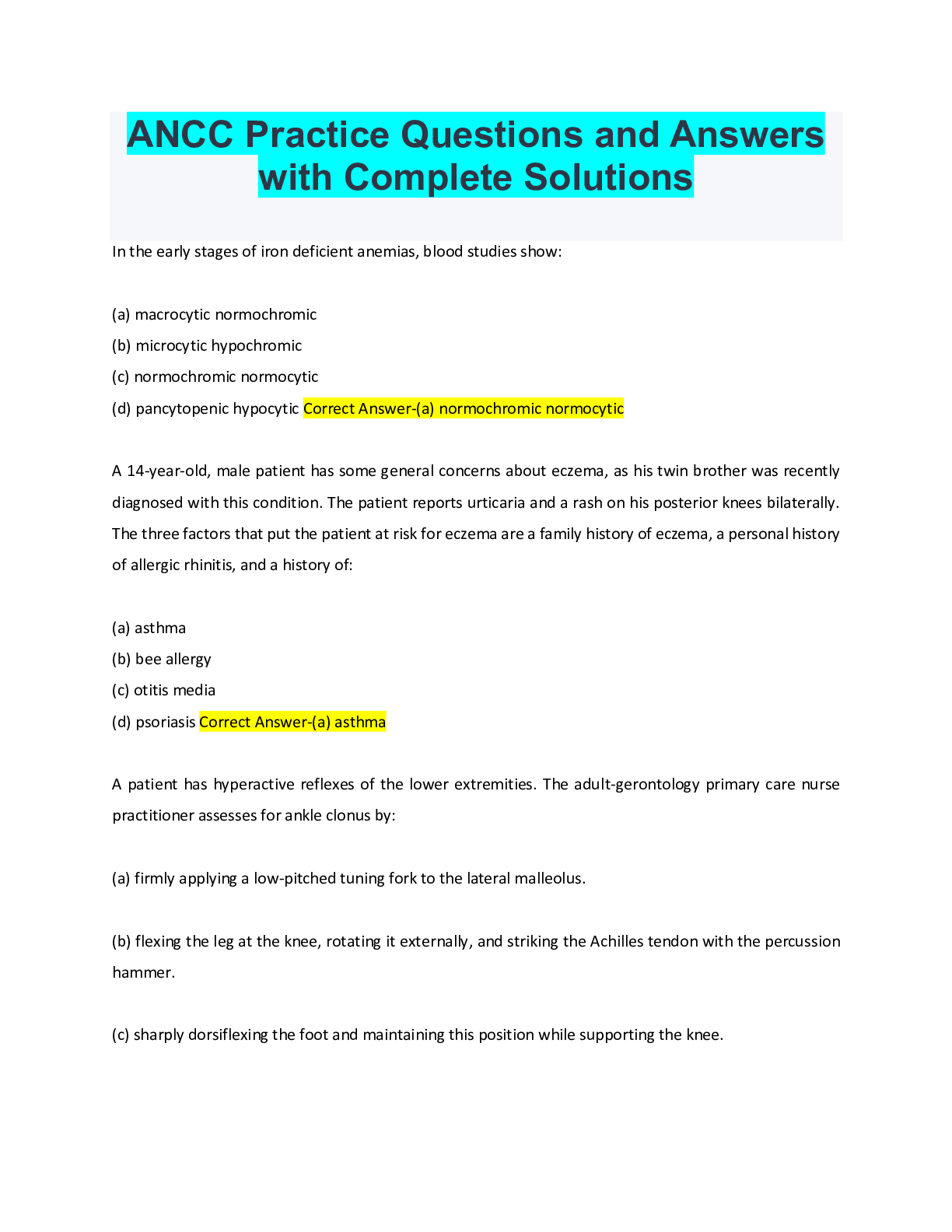
.png)
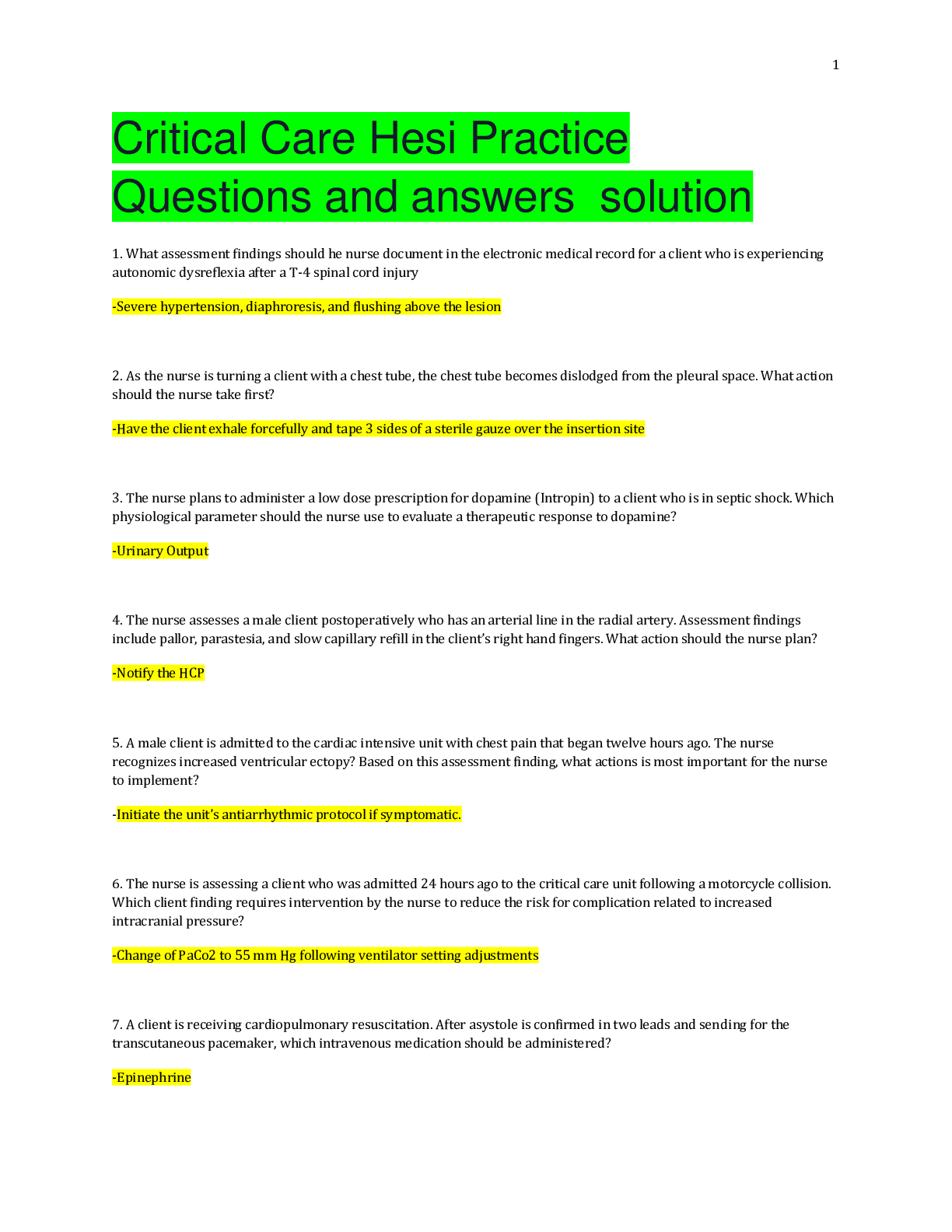

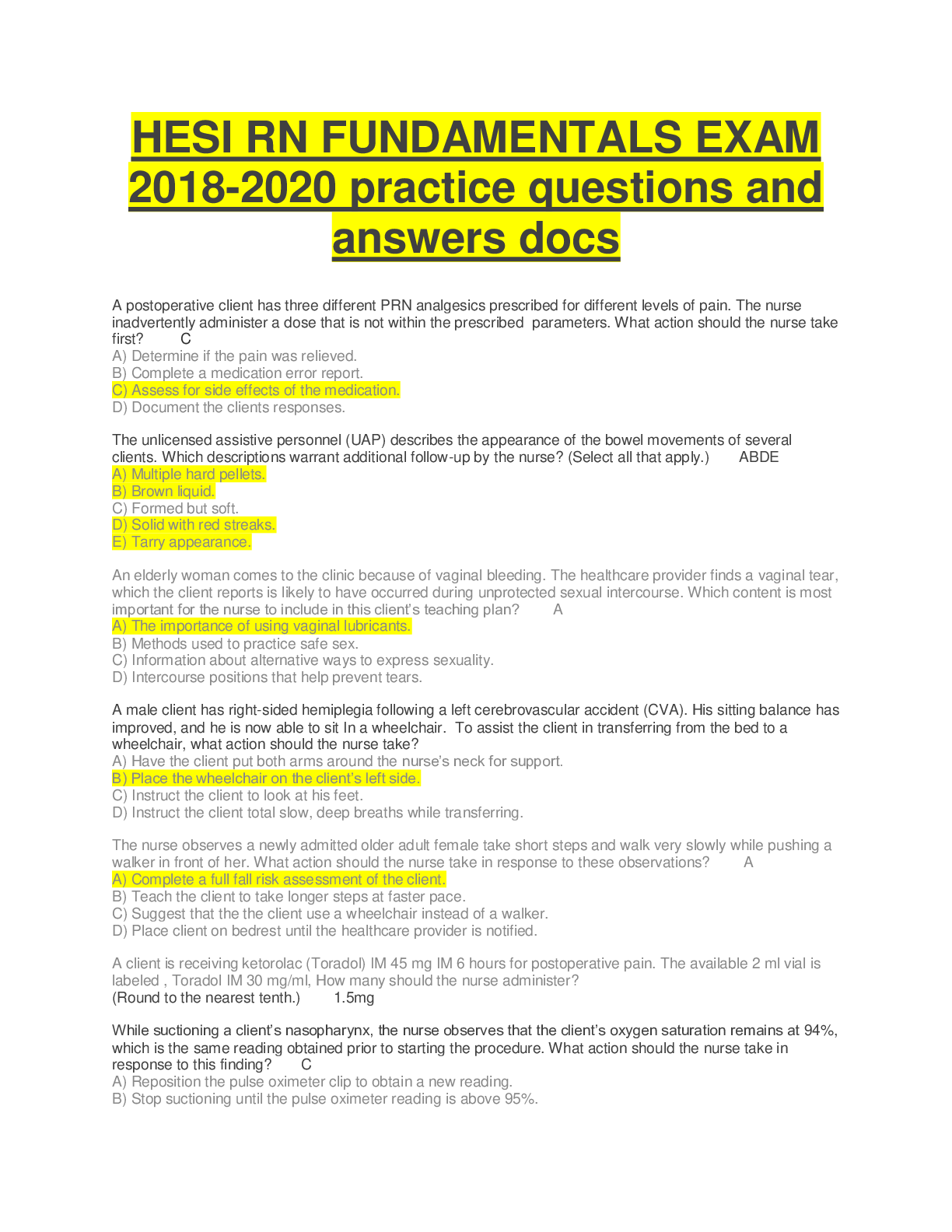
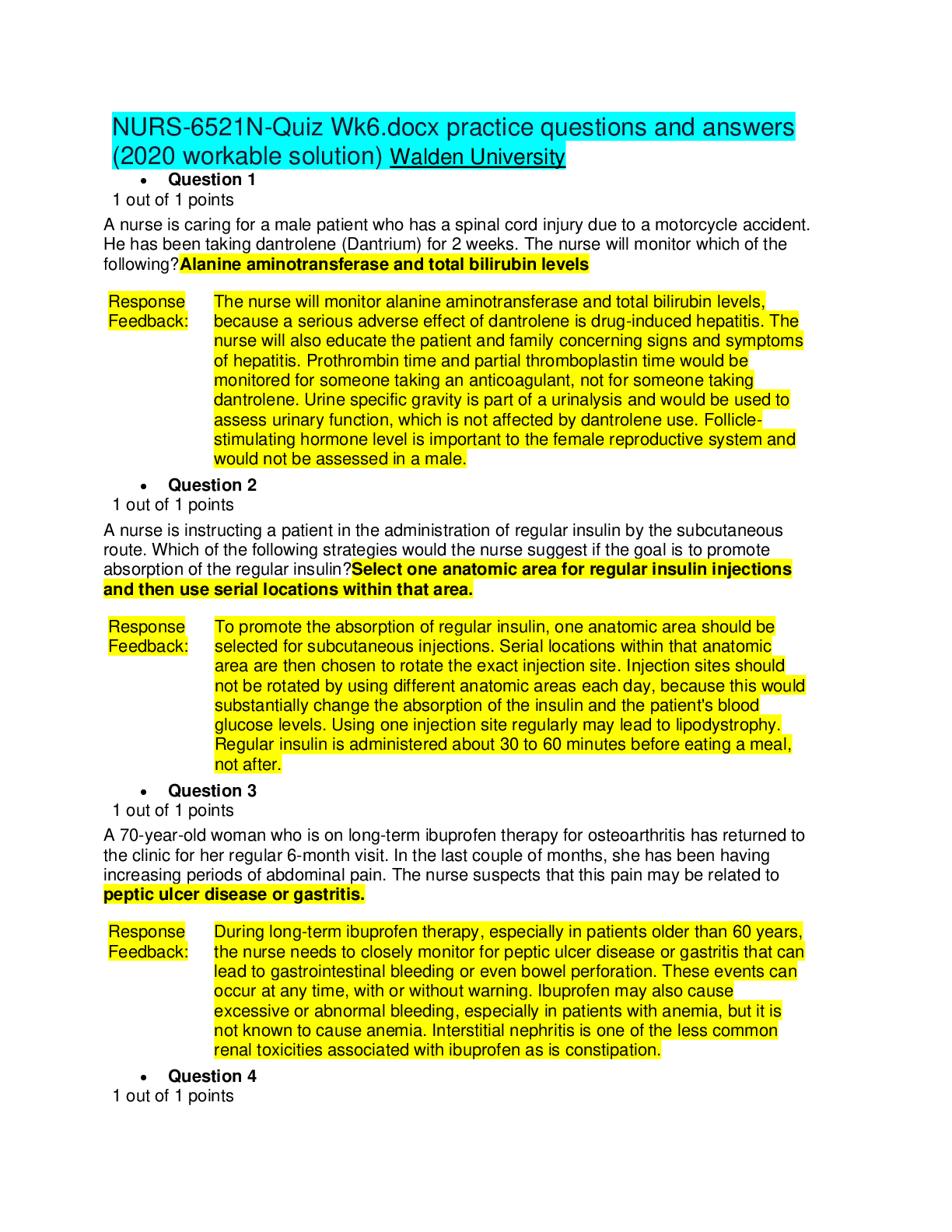

.png)



